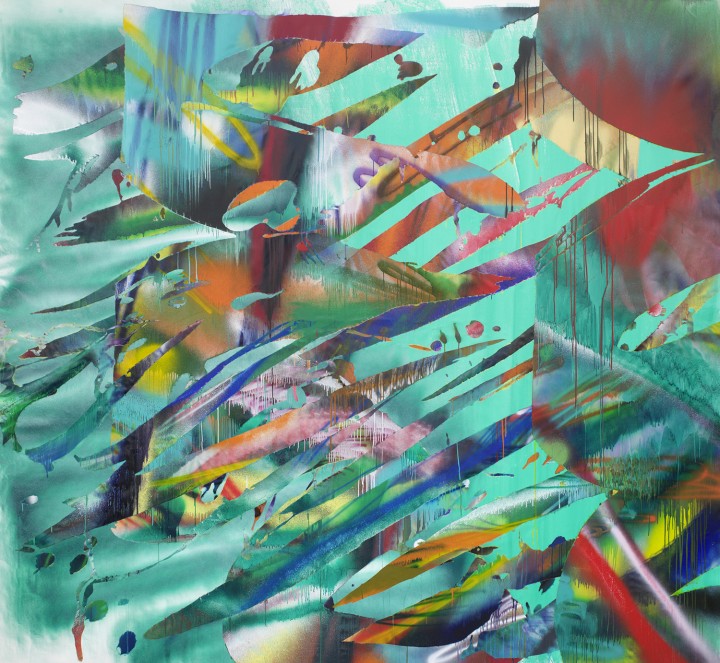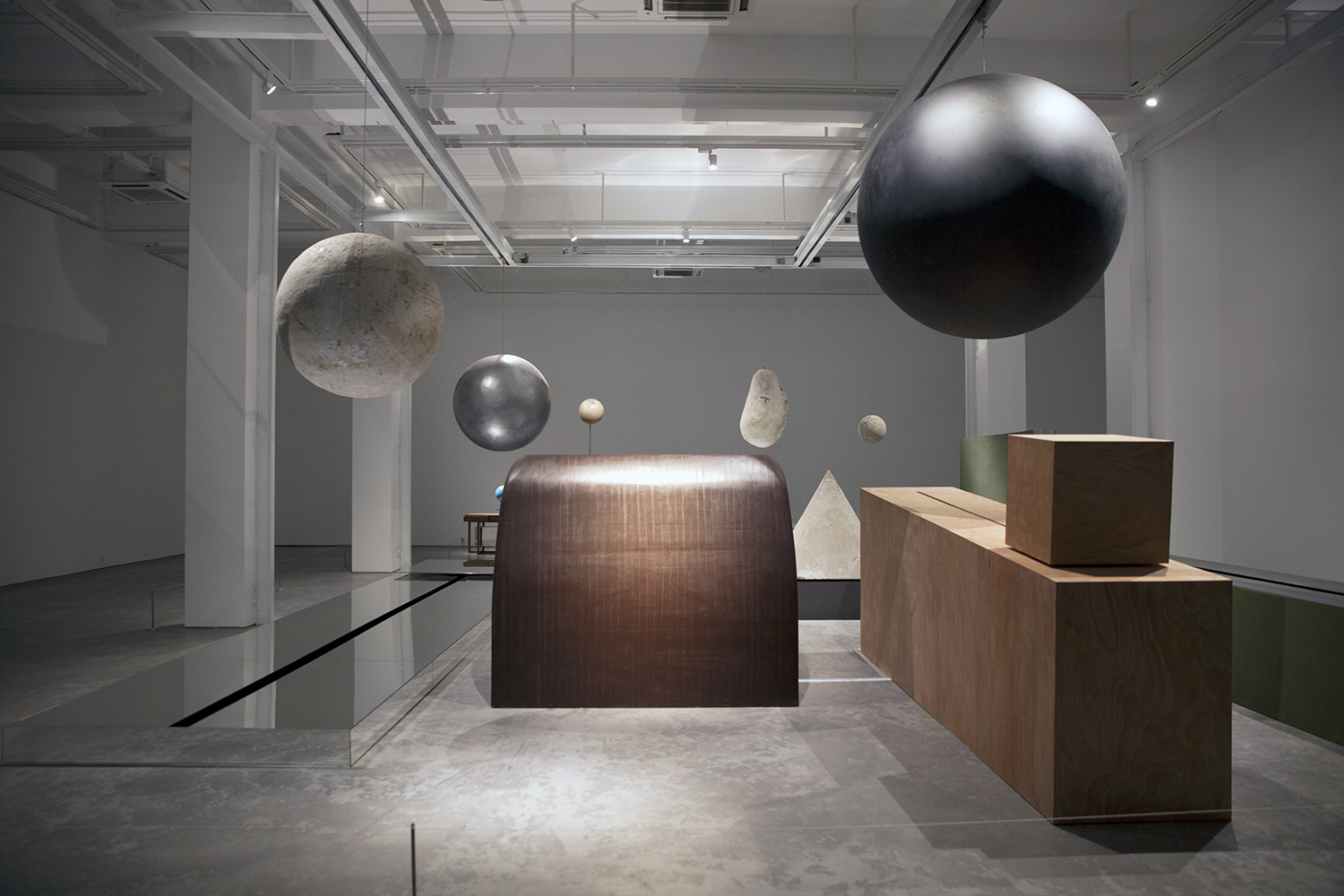Forty-seven galleries officially took part in this year’s Gallery Weekend Berlin, and though this number is down by a few from previous years, there was more than enough to see: big-name solo presentations, group shows and an abundance of events not on the official program.
It was weird being driven around in a BMW during the press preview, in a city whose government and many of its residents are cash-strapped, but it did make getting to some of the outlier galleries easier. Capitain Petzel on Karl-Marx-Allee, for example, was showing Laura Owens, who installed five paintings arranged in a stacked pattern in the middle of the gallery, making optimum use of the building’s difficult space. Viewed from a certain angle, the viewer can read a text across the canvases, which ends on a painting in the downstairs room. Down the road, more text was on view at Mark Flood’s show at Peres Projects, which features a new series of works called Aged Paintings that look as if they were part of some post-apocalyptic sign museum that time forgot.
A preview of Cyprien Gaillard’s exhibition at Sprüth Magers pulled in huge crowds during the weekend. At the center of Gaillard’s exhibition is a fifteen-minute film titled Nightlife that took two years to make. The film is a nighttime tour of Hollywood juniper swaying along the side of the road, a windblown German oak given to Jesse Owens during the 1936 Olympics and planted in Cleveland, and an aerial view of the annual fireworks festival that takes place near Berlin’s Olympic stadium, shot with a drone to amazing effect — all in stunning 3-D. Urban landmarks and cultural landscapes are themes that run throughout Gaillard’s work, and here they are brought to the audience in a large-format film that might at first be remarkable for its technological sophistication, but whose images and soundtrack stick with you as you forget about first impressions. Gaillard’s film reminds us how culture, and especially its artifacts, can be transported, transplanted and left to decay and die unless spotlighted — a tale that bears repeating in Berlin, where it seems the vibrancy of diversity is often buried under financial insecurity and political inaction.
Rosa Barba’s first exhibition at Meyer Riegger, Inside a Magnified Picture, offered a considered look at artistic narration by way of a film, Time as Perspective (2012), and installation pieces that make heavy use of celluloid and old film equipment. These latter works are found in the back half of the gallery and reminded me of a projector room — a hidden part of old cinema houses. Indeed, the hidden and the exposed is a theme that runs throughout many of the Weekend’s exhibitions, with some galleries opting for international art stars, while others presented lesser known, more locally oriented positions. Klara Lidén is definitely not unknown, but many of the materials in her installation at Galerie Neu may be. The artist used the ubiquitous but unremarkable thick wooden boards used to cover sidewalks under construction, together with Plattenbau stones from former GDR parts of the city to form benches of different shapes and sizes. As if props in a play, you can sit on them and look up at large water tanks — originally used for who knows what — that have been hung from the ceiling and look like entertainingly overblown theater lighting.
Theater was also a theme on my walking tour of Potsdamer Strasse, where Calla Henkel and Max Pitegoff’s first exhibition with Isabella Bortolozzi turned the gallery space itself into a stage of sorts and offered a subtle reflection on the economics of space. Further down the street, Sanya Kantarovsky’s curated show at Tanya Leighton, No Joke, stood out as an engaging group show. Spread across both of Leighton’s spaces, it includes artists like Richard Artschwager, Math Bass, Allison Katz, Laeh Glenn and Ad Reinhardt, whose work pokes fun at its own composition and status as object to be viewed.
On Sunday morning I biked to Katharina Grosse’s exhibition, The Smoking Kid, at Johann König’s new gallery/cultural center (now called König Galerie) at the old St. Agnes church in Kreuzberg. Grosse’s installation in the main exhibition hall is awe-inspiring, with six very large paintings of the artist’s typically bright-colored, explosive abstract compositions hung on the walls. I was also impressed by the way in which König has incorporated the church into the surrounding community by including a café, a non-profit art space, PRAXES, and other creative entities, like the magazine 032c. In a city that is as broke as Berlin, it is heartening to know that some people still believe in the cultural integrity of the city.



